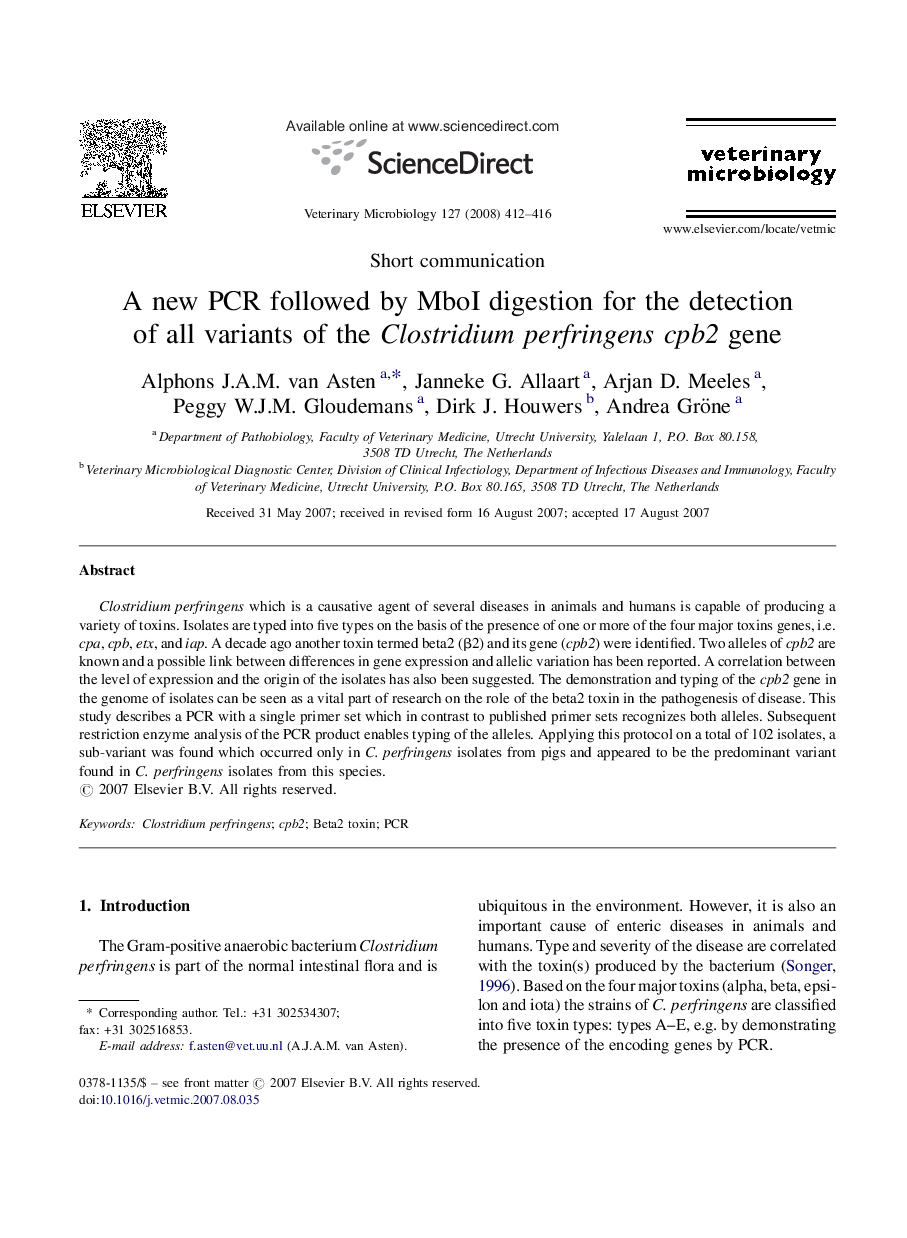| Article ID | Journal | Published Year | Pages | File Type |
|---|---|---|---|---|
| 2468980 | Veterinary Microbiology | 2008 | 5 Pages |
Clostridium perfringens which is a causative agent of several diseases in animals and humans is capable of producing a variety of toxins. Isolates are typed into five types on the basis of the presence of one or more of the four major toxins genes, i.e. cpa, cpb, etx, and iap. A decade ago another toxin termed beta2 (β2) and its gene (cpb2) were identified. Two alleles of cpb2 are known and a possible link between differences in gene expression and allelic variation has been reported. A correlation between the level of expression and the origin of the isolates has also been suggested. The demonstration and typing of the cpb2 gene in the genome of isolates can be seen as a vital part of research on the role of the beta2 toxin in the pathogenesis of disease. This study describes a PCR with a single primer set which in contrast to published primer sets recognizes both alleles. Subsequent restriction enzyme analysis of the PCR product enables typing of the alleles. Applying this protocol on a total of 102 isolates, a sub-variant was found which occurred only in C. perfringens isolates from pigs and appeared to be the predominant variant found in C. perfringens isolates from this species.
